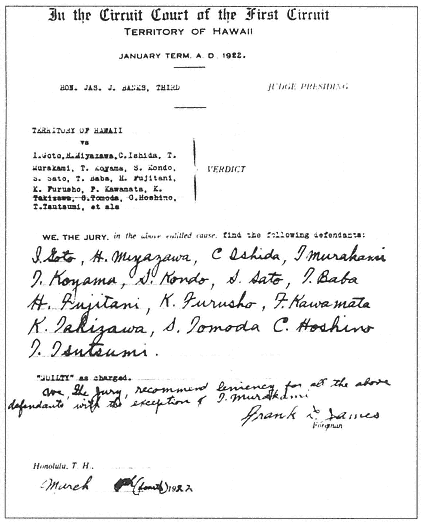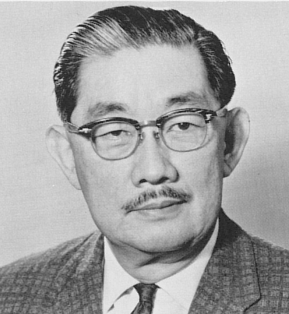John Harvey Coney was born in June 1820 in Litchfield, NY. He came to Hawaiʻi after participating in the 1848 Mexican-American War. He married Laura Amoy Kekuakapuokalani Ena (she was 17) on November 27, 1860.
John, supposedly through his wife’s family’s connections with King Kamehameha IV, was soon appointed Sheriff of Hilo, where Laura’s ancestral lands were located. (Williams)
“I stopped 3 days with Hon. Mr. (Coney), Deputy Marshal of the Kingdom, at Hilo, Hawaii, last week, & by a funny circumstance, he knew everybody that ever I knew in Hannibal & Palmyra. We used to sit up all night talking, & then sleep all day. He lives like a Prince.” (Twain)
The Coneys lived in a long grass thatched house on the mauka (toward the mountain) side of the courthouse lot, and later built a pretentious residence which is now (1922) the County Building….” (Williams)
Coney was “a tall handsome man, who carried himself like a soldier,” he was “titular executive head of government next to the Governess of Hawaiʻi and Lieut. Governor”. (Sanderson)
Besides being Sheriff (and later postmaster,) Coney got into a variety of business interests. An April 22, 1868 Hawaiian Gazette notes, “Wharf at Hilo. The landing of passengers and goods at the Harbor of Hilo has been facilitated by the building of a short wharf from the rocky point at the west end of the beach. It has been made by the enterprise of Mr Coney and Mr Hitchcock”.
“The wharf just built is well timbered and fastened, and carries six feet of water. Its strength was tested by the great, earthquake wave of Thursday, and by a loaded scow washing upon it, and it proved equal to the strain. Wharfage, hereafter, will be one of the charges on schooners running to Hilo.” (Hawaiian Gazette, April 22, 1868)
Wife Laura was of royal descent. She was the daughter of Chinese merchant John Lawai Ena and Hawaiian chiefess Kaikilanialiiwahineopuna (a descendent of the Kamehameha line and the last high chiefess of the Puna district of the island of Hawaiʻi.) She was described as “an exceptionally fine woman of high character, gracious manner, generous instincts and kind disposition….” (Williams)
The Coneys had six children: Clarissa (Clara) Piilani Amoy Coney (lady-in-waiting to the household of Queen Kapiʻolani;) Mary Ululani Monroe Coney; John Harvey Haalalea Coney (High Sheriff on Kauaʻi, later Territorial Representative and Senator;) Elizabeth (Lizzy) Likelike Kekaekapuokulani Coney (lady in waiting to Princess Miriam Likelike Cleghorn at Coronation of Kalākaua;) Eleanor (Kaikilani) Coney (travelling companion to Queen Liliʻuokalani across US) and William Hawks Hulilaukea Coney (co-Founder with Wallace Rider Farrington of Evening Bulletin, predecessor of the Honolulu Star Bulletin.)
Laura taught her children not to speak of their aliʻi blood, to forget about high chiefs and chiefesses, and to make their own way in the world because the days of chiefs and chiefesses were gone.
A daughter-in-law once noted, “I remember a time when the king (Kalākaua) was calling on Mother Coney. He was busy at the time collecting the genealogies of the nobility and the mele (songs, chants) of the Hawaiians.”
“He said to Mother Coney, ‘Tell me, Mrs. Coney, who were your ancestors, I know that you belong to the Kamehameha line.’ ‘Adam and Eve were my ancestors,’ she replied.” (Williams)
After about 18-years in Hilo, the Coneys moved to Honolulu; their home (which they called ‘ Halelelea,’ that they translated to ‘Pleasant House’) was just mauka of ʻIolani Palace (on the mauka-Diamond Head corner of Richards and Hotel Streets.) It was often the setting for many of the city’s “brilliant entertainments” during the Kalākaua monarchy. (Williams)
In the Māhele of 1848, the property had been grant to High Chiefess Miriam Ke‘ahikuni Kekauōnohi, a granddaughter of Kamehameha I and a wife of Kamehameha II. Upon her death on June 2, 1851, all her property was passed on to her second husband, High Chief Levi Haʻalelea.
Levi Haʻalelea’s second wife was Amoe Ululani Ena Haʻalelea, sister of Laura Ena Coney. When Levi Haʻalelea died in 1864, his second wife transferred ownership of the land to her sister’s husband John Coney.
In 1889, the Coney’s home, Halelelea, played a minor role during the Wilcox rebellion to restore the rights of the monarchy, two years after the Bayonet Constitution of 1887 left King Kalākaua a mere figurehead.
The insurgents were hunkered down in a bungalow across a narrow lane from the Coney House. The plan was to throw dynamite at the bungalow.
“No attack was expected from that quarter, and there was nothing to disturb the bomb thrower. (Hay Wodehouse) stood for a moment with a bomb in his hand as though he were in the box waiting for a batsman. He had to throw over a house to reach the bungalow, which he could not see.”
“The first bomb went sailing over the wall, made a down curve and struck the side of the bungalow about a foot from the roof … The bomb had reached them and hurt a number of the insurgents. “
Wodehouse “coolly picked out another bomb. Then he took a step back, made a half turn and sent it whizzing. It landed on the roof … He threw one more bomb and Wilcox came out and surrendered.” (The Sporting Life, October 16, 1889)
Another property that had been granted to Kekauōnohi and subsequently conveyed to Coney at the same time as their home was approximately 41,000-acres of land at Honouliuli. In 1877, Coney sold that land to James Campbell, who soon started Honouliuli Ranch. After drilling Hawaiʻi’s first artesian well (1879,) by 1890 the Ewa Plantation Company was established.
John Harvey Coney died in Honolulu on October 9, 1880, at the age of 60. Laura Ena Coney died in Honolulu on February 24, 1929, at the age of 85.
In a funeral recitation for Laura given by the Reverend Akaiko Akana, pastor of Kawaiahaʻo Church, on February 24, 1929, Laura was referred to as “one of the old and prominent kamaʻāinas who has helped to build Hawaii, not only by her personal effort, but through her influence on her husband, children and influencial associates and acquaintances throughout these islands.” (Williams)
There are two marble plaques in Kawaiahaʻo Church commemorating members of the Coney family, both above the mauka royal pew. Donated by her daughters Kaikilani and Elizabeth, one reads: In Memory of Laura Kekuakapuokalani Coney 1844—1929 Always a devoted member of Kawaiahaʻo Church, she often said, “Ka wahi e nele ai, e haʻawi” Where need is, there give.
The other plaque reads: “In Memory of Levi Haʻalelea 1828-1864 His wife Ululani A. A. Haʻalelea 1824-1904 and Richard Haʻalilio 1808—1844.” (I have been told this plaque is incorrect – Levi Haʻalelea was born in 1822; the last name listed should be Timothy Haʻalilio.)
The image shows John Harvey Coney. In addition, I have added other related images in a folder of like name in the Photos section on my Facebook and Google+ pages.










































